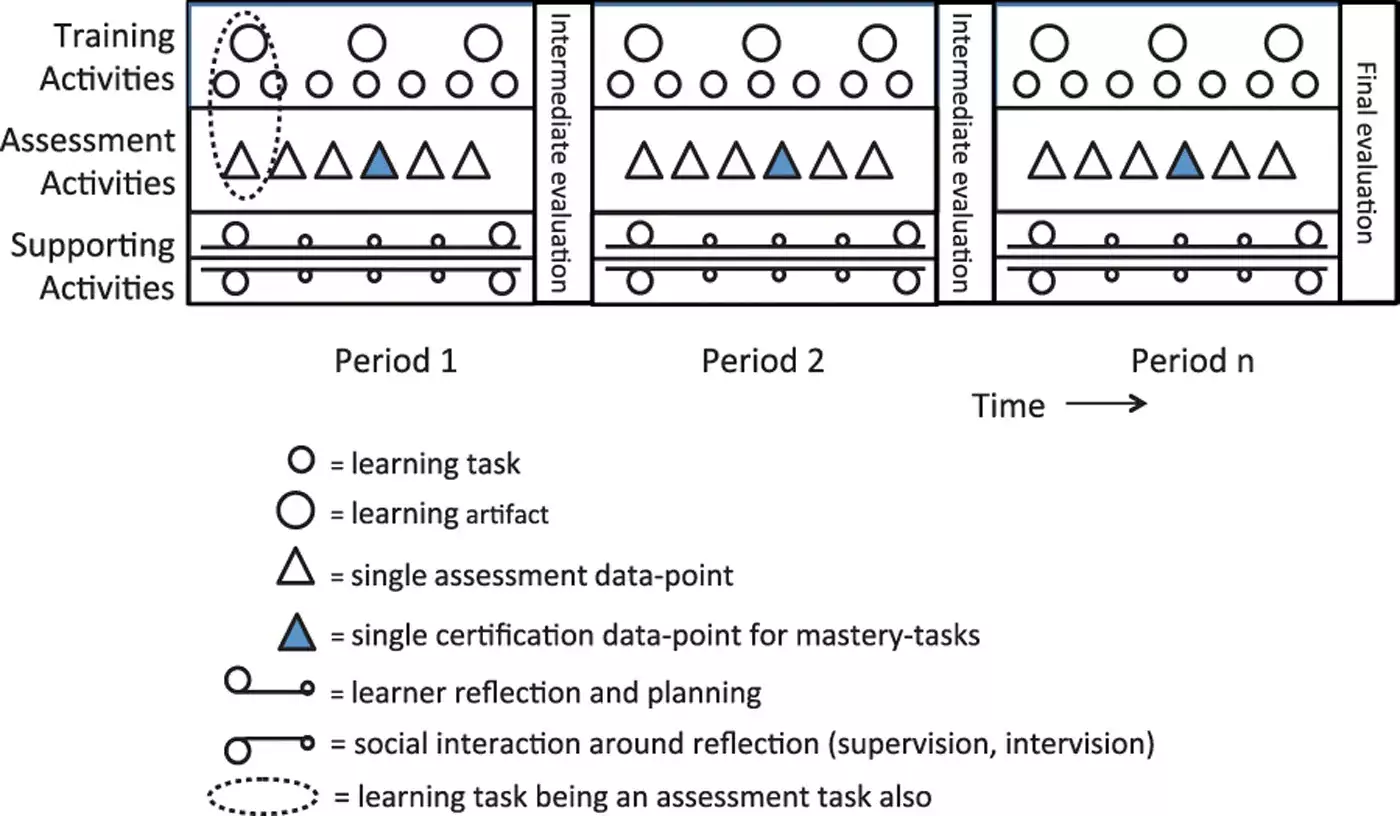Programmatic assessment
Imagine Programmatic Assessment as an ongoing checkup for your entire medical program. It uses various assessments throughout the program, not just exams, to ensure it's on track to produce competent, safe graduates. Think of it as a compass, guiding improvements and keeping you aligned with your program's goals!
Model of programmatic assessment in action
Van der Vleuten proposed a model that is optimized for fitness of purpose (van der Vleuten 2012). The purpose of an assessment program is to maximize assessment for learning while at the same time arriving at robust decisions about learners’ progress. This figure provides a graphical representation of the model. In the model, they make a distinction between training activities, assessment activities, and learner support activities as a function of the time in the ongoing curriculum.

Twelve Tips for programmatic assessment
Enhancing medical education through effective assessment practices is paramount in fostering competent healthcare professionals. In their article 'Twelve Tips for Programmatic Assessment,' C.P.M. Van Der Vleuten et al. provide invaluable insights into optimizing assessment programs. This paper offers practical strategies for educators seeking to enhance learning outcomes and ensure the quality of medical education:
Tip 1- Develop a master plan for assessment
Tip 2- Develop examination regulations that promote feedback orientation
Tip 3- Adopt a robust system for collecting information
Tip 4- Assure that every low-stakes assessment provides meaningful feedback for learning
Tip 5- Provide mentoring to learners
Tip 6- Ensure trustworthy decision-making
Tip 7- Organize intermediate decision-making assessments
Tip 8- Encourage and facilitate personalized remediation
Tip 9- Monitor and evaluate the learning effect of the program and adopt
Tip 10- Use the assessment process information for curriculum evaluation
Tip 11- Promote continuous interaction between the stakeholders
Tip 12- Develop a strategy for implementation
References and related material
- Van der Vleuten, C. P. M., Schuwirth, L. W. T., Driessen, E. W., Dijkstra, J., Tigelaar, D., Baartman, L. K. J., & van Tartwijk, J. (2012). A model for programmatic assessment fit for purpose. Medical Teacher, 34(3), 205-214. https://doi.org/10.3109/0142159x.2012.652239
- Van Der Vleuten, C., Schuwirth, L., Driessen, E., Govaerts, M., & Heeneman, S. (2014). Twelve Tips for programmatic assessment. Medical Teacher, 37(7), 641-646. https://doi.org/10.3109/0142159x.2014.973388
